Restoring the Unrestored: Strategies for Restoring Global Land during the UN Decade on Ecosystem Restoration (UN-DER)
Abstract
1. Land as a Vital Resource for Sustainable Development
2. The Challenges of Restoring Degraded Land within the Target Period
3. Ten-Point Action Plan for Global Land Restoration
3.1. Empower A Global Movement
3.2. Finance Restoration on the Ground
3.3. Set the Right Incentives
3.4. Celebrate Leadership
3.5. Shift Behaviors
3.6. Invest in Research
3.7. Build up Capacity
3.8. Celebrate a Culture of Restoration
3.9. Build up the Next Generation
3.10. Listen and Learn
4. Conclusions
Funding
Data Availability Statement
Acknowledgments
Conflicts of Interest
References
- Edrisi, S.A.; Abhilash, P.C. Exploring marginal and degraded lands for biomass and bioenergy production: An Indian scenario. Renew. Sustain. Energy Rev. 2016, 54, 1537–1551. [Google Scholar] [CrossRef]
- IRP. A think piece of the International Resource Panel. In Land Restoration for Achieving the Sustainable Development Goals: An International Resource Panel Think Piece; Herrick, J.E., Abrahamse, T., Abhilash, P.C., Ali, S.H., Alvarez-Torres, P., Barau, A.S., Branquinho, C., Chhatre, A., Chotte, J.L., Von Maltitz, G.P., Eds.; United Nations Environment Programme: Nairobi, Kenya, 2019. [Google Scholar]
- Larbodière, L.; Davies, J.; Schmidt, R.; Magero, C.; Vidal, A.S.A.; Bucher, P.; Maginnis, S.; Cox, N.; Hasinger, O.; Abhilash, P.C.; et al. Common Ground: Restoring Land Health for Sustainable Agriculture; International Union for Conservation of Nature (IUCN): Gland, Switzerland, 2020. [Google Scholar]
- Wu, N.; Wang, C.; Ausseil, A.G.; Alhafedh, Y.; Broadhurst, L.; Lin, H.J.; Axmacher, J.; Okubo, S.; Turney, C.; Onuma, A.; et al. Chapter 4: Direct and indirect drivers of change in biodiversity and nature’s contributions to people. In IPBES (2018): The IPBES Regional Assessment Report on Biodiversity and Ecosystem Services for Asia and the Pacific; Karki, M., Sellamuttu, S.S., Okayasu, S., Suzuki, W., Acosta, L.A., Alhafedh, Y., Anticamara, J.A., Ausseil, A.G., Davies, K., Gasparatos, A., et al., Eds.; Secretariat of the Intergovernmental Science-Policy Platform on Biodiversity and Ecosystem Services (IPBES): Bonn, Germany, 2018; pp. 265–370. [Google Scholar]
- Tripathi, V.; Edrisi, S.; Chaurasia, R.; Pandey, K.K.; Dinesh, D.; Srivastava, R.; Srivastava, P.; Abhilash, P. Restoring HCHs polluted land as one of the priority activities during the UN-International Decade on Ecosystem Restoration (2021–2030): A call for global action. Sci. Total. Environ. 2019, 689, 1304–1315. [Google Scholar] [CrossRef] [PubMed]
- Dubey, P.K.; Singh, A.; Raghubanshi, A.; Abhilash, P.C. Steering the restoration of degraded agroecosystems during the United Nations Decade on Ecosystem Restoration. J. Environ. Manag. 2021, 280, 111798. [Google Scholar] [CrossRef]
- Priyadarshini, P.; Abhilash, P.C. Fostering sustainable land restoration through circular economy-governed transitions. Restor. Ecol. 2020, 28, 719–723. [Google Scholar] [CrossRef]
- Keesstra, S.; Geissen, V.; Mosse, K.; Piiranen, S.; Scudiero, E.; Leistra, M.; Van Schaik, L. Soil as a filter for groundwater quality. Curr. Opin. Environ. Sustain. 2012, 4, 507–516. [Google Scholar] [CrossRef]
- Keesstra, S.; Nunes, J.P.; Saco, P.; Parsons, T.; Poeppl, R.; Masselink, R.; Cerdà, A. The way forward: Can connectivity be useful to design better measuring and modelling schemes for water and sediment dynamics? Sci. Total Environ. 2018, 644, 1557–1572. [Google Scholar] [CrossRef]
- Keesstra, S.; Mol, G.; De Leeuw, J.; Okx, J.; Molenaar, C.; De Cleen, M.; Visser, S. Soil-Related Sustainable Development Goals: Four Concepts to Make Land Degradation Neutrality and Restoration Work. Land 2018, 7, 133. [Google Scholar] [CrossRef]
- Abhilash, P.C.; Tripathi, V.; Edrisi, S.A.; Dubey, R.K.; Bakshi, M.; Dubey, P.K.; Singh, H.B.; Ebbs, S.D. Sustainability of crop production from polluted lands. Energy Ecol. Environ. 2016, 1, 54–65. [Google Scholar] [CrossRef]
- UNEP. Policy Coherence of the Sustainable Development Goals. A Natural Resource Perspective; United Nations Environment Programme: Nairobi, Kenya, 2015. [Google Scholar]
- Tripathi, V.; Edrisi, S.A.; Chen, B.; Gupta, V.K.; Vilu, R.; Gathergood, N.; Abhilash, P.C. Biotechnological Advances for Restoring Degraded Land for Sustainable Development. Trends Biotechnol. 2017, 35, 847–859. [Google Scholar] [CrossRef] [PubMed]
- WRI. Roots of Prosperity: The Economics and Finance of Restoring Land; Ding, H., Faruqi, S., Wu, A., Altamirano, J.C., Ortega, A.A., Cristales, R.Z., Chazdon, R., Vergara, W., Verdone, M., Eds.; World Resources Institute: Washington, DC, USA, 2017. [Google Scholar]
- IPBES. Summary for Policymakers of the Assessment Report on Land Degradation and Restoration of IPBES; Scholes, R., Montanarella, L., Brainich, A., Barger, N., ten Brink, B., Cantele, M., Erasmus, B., Fisher, J., Gardner, T., Holland, T.G., et al., Eds.; Intergovernmental Science-Policy Platform on Biodiversity and Ecosystem Services: Bonn, Germany, 2018. [Google Scholar]
- IUCN. Policy Brief on the Economics of Forest Landscape Restoration; International Union for Conservation of Nature: Gland, Switzerland, 2020. [Google Scholar]
- Edrisi, S.A.; Tripathi, V.; Chaturvedi, R.K.; Dubey, D.K.; Patel, G.; Abhilash, P.C. Saline Soil Reclamation Index as an efficient tool for assessing restoration progress of saline land. Land Degrad. Dev. 2021, 32, 123–138. [Google Scholar] [CrossRef]
- Edrisi, S.A.; El-Keblawy, A.; Abhilash, P.C. Sustainability Analysis of Prosopis juliflora (Sw.) DC Based Restoration of Degraded Land in North India. Land 2020, 9, 59. [Google Scholar] [CrossRef]
- Edrisi, S.A.; Tripathi, V.; Abhilash, P.C. Performance Analysis and Soil Quality Indexing for Dalbergia sissoo Roxb. Grown in Marginal and Degraded Land of Eastern Uttar Pradesh, India. Land 2019, 8, 63. [Google Scholar] [CrossRef]
- Edrisi, S.A.; Tripathi, V.; Abhilash, P.C. Towards the sustainable restoration of marginal and degraded lands in India. Trop. Ecol. 2018, 59, 397–416. [Google Scholar]
- Tripathi, V.; Edrisi, S.A.; Abhilash, P.C. Towards the coupling of phytoremediation with bioenergy production. Renew. Sustain. Energy Rev. 2016, 57, 1386–1389. [Google Scholar] [CrossRef]
- Stocking, M. Land Degradation. Int. Encycl. Soc. Behav. Sci. 2001, 8242–8247. [Google Scholar] [CrossRef]
- Syktus, J.I.; McAlpine, C.A. More than carbon sequestration: Biophysical climate benefits of restored savanna woodlands. Sci. Rep. 2016, 6, 29194. [Google Scholar] [CrossRef] [PubMed]
- Tripathi, V.; Dubey, R.K.; Edrisi, S.A.; Narain, K.; Singh, H.; Singh, N.; Abhilash, P.C. Towards the ecological profiling of a pesticide contaminated soil site for remediation and management. Ecol. Eng. 2014, 71, 318–325. [Google Scholar] [CrossRef]
- Abhilash, P.C.; Dubey, R.K.; Tripathi, V.; Srivastava, P.; Verma, J.P.; Singh, H.B. Remediation and management of POPs-contaminated soils in a warming climate: Challenges and perspectives. Environ. Sci. Pollut. Res. 2013, 20, 5879–5885. [Google Scholar] [CrossRef]
- Abhilash, P.C.; Jamil, S.; Singh, N. Transgenic plants for enhanced biodegradation of organic xenobiotics. Biotechnol. Adv. 2009, 27, 474–488. [Google Scholar] [CrossRef]
- Abhilash, P.C.; Powell, J.; Singh, H.B.; Singh, B. Plant-microbe interactions: Novel applications for exploitation in multipurpose remediation technologies. Trends Biotechnol. 2012, 30, 416–420. [Google Scholar] [CrossRef]
- IPCC. Climate Change and Land: An IPCC Special Report on Climate Change, Desertification, Land Degradation, Sustainable Land Management, Food Security, and Greenhouse Gas Fluxes in Terrestrial Ecosystems; Intergovernmental Panel on Climate Change: Geneva, Switzerland, 2019. [Google Scholar]
- IPBES. The IPBES Assessment Report on Land Degradation and Restoration; Intergovernmental Platform for Biodiversity and Ecosystem Services: Bonn, Germany, 2018. [Google Scholar]
- FAO. Assessing Forest Degradation: Towards the Development of Globally Applicable Guidelines; Forest Resources Assessment Working Paper 177; Food and Agricultural Organization: Rome, Italy, 2011. [Google Scholar]
- Wang, C.; Qi, J.; Cochrane, M. Assessment of Tropical Forest Degradation with Canopy Fractional Cover from Landsat ETM+ and IKONOS Imagery. Earth Interact. 2005, 9, 1–18. [Google Scholar] [CrossRef]
- Mitchell, A.L.; Rosenqvist, A.; Mora, B. Current remote sensing approaches to monitoring forest degradation in support of countries measurement, reporting and verification (MRV) systems for REDD+. Carbon Balance Manag. 2017, 12, 1–22. [Google Scholar] [CrossRef] [PubMed]
- Prăvălie, R.; Patriche, C.; Borrelli, P.; Panagos, P.; Roșca, B.; Dumitraşcu, M.; Nita, I.A.; Săvulescu, I.; Birsan, M.V.; Bandoc, G. Arable lands under the pressure of multiple land degradation processes. A global perspective. Environ. Res. 2021, 194, 110697. [Google Scholar] [CrossRef] [PubMed]
- Strassburg, B.B.N.; Iribarrem, A.; Beyer, H.L.; Cordeiro, C.L.; Crouzeilles, R.; Jakovac, C.C.; Junqueira, A.B.; Lacerda, E.; Latawiec, A.E.; Balmford, A.; et al. Global priority areas for ecosystem restoration. Nature 2020, 586, 724–729. [Google Scholar] [CrossRef] [PubMed]
- Strassburg, B.B.N.; Beyer, H.L.; Crouzeilles, R.; Iribarrem, A.; Barros, F.; De Siqueira, M.F.; Sánchez-Tapia, A.; Balmford, A.; Sansevero, J.B.B.; Brancalion, P.H.S.; et al. Strategic approaches to restoring ecosystems can triple conservation gains and halve costs. Nat. Ecol. Evol. 2019, 3, 62–70. [Google Scholar] [CrossRef] [PubMed]
- Ferrier, S. Prioritizing where to restore Earth’s ecosystems. Nat. Cell Biol. 2020, 586, 680–681. [Google Scholar] [CrossRef]
- Sutton, P.C.; Anderson, S.J.; Costanza, R.; Kubiszewski, I. The ecological economics of land degradation: Impacts on ecosystem service values. Ecol. Econ. 2016, 129, 182–192. [Google Scholar] [CrossRef]
- Credit Suisse, WWF (World Wildlife Fund), and McKinsey and Company. Conservation Finance: Moving Beyond Donor Funding toward an Investor-Driven Approach. 2014. Available online: https://earthmind.org/library/guidelines/conservation-finance-moving-beyond-donor-funding-toward-investor-driven-approach (accessed on 15 January 2021).
- WRI. Roots of Prosperity: The Economics and Finance of Restoring Land. 2017. Available online: https://www.wri.org/publication/roots-of-prosperity (accessed on 15 January 2021).
- Nkonya, E.; Mirzabaev, A.; von Braun, J. Economics of Land Degradation and Improvement: A global Assessment for Sustainable Development; Springer: Berlin/Heidelberg, Germany, 2016; Volume 686. [Google Scholar]
- Wainaina, P.; Minang, P.A.; Gituku, E.; Duguma, L. Cost-Benefit Analysis of Landscape Restoration: A Stocktake. Land 2020, 9, 465. [Google Scholar] [CrossRef]
- Machado, A.A.S.; Lau, C.W.; Till, J.; Kloas, W.; Lehmann, A.; Becker, B.; Rillig, M.C. Impacts of microplastics on the soil biophysical environment. Environ. Sci. Technol. 2018, 52, 9656–9665. [Google Scholar] [CrossRef]
- Bakshi, M.; Singh, H.B.; Abhilash, P.C. Unseen impact of nanoparticles: More or less? Cur. Sci. 2014, 106, 350–352. [Google Scholar]
- DES. Land Restoration Fund: Priority Investment Plan; Department of Environment and Science Government: Queensland, Australia, 2020. [Google Scholar]
- FAO. Sustainable Financing for Forest and Landscape Restoration-Opportunities, Challenges and the Way Forward; Liagre, L., Lara Almuedo, P., Besacier, C., Conigliaro, M., Eds.; Food and Agricultural Organization: Rome, Italy, 2015. [Google Scholar]
- Tripathi, V.; Edrisi, S.; O’Donovan, A.; Gupta, V.K.; Abhilash, P.C. Bioremediation for Fueling the Biobased Economy. Trends Biotechnol. 2016, 34, 775–777. [Google Scholar] [CrossRef]
- Catacutan, D.C.; Villamor, G.B. Gender Roles and Land Use Preferences—Implications to Landscape Restoration in Southeast Asia. In Land Restoration: Reclaiming Landscapes for a Sustainable Future; Academic Press: London, UK, 2016; pp. 431–440. [Google Scholar]
- Yurui, L.; Xuanchang, Z.; Zhi, C.; Zhengjia, L.; Zhi, L.; Yansui, L. Towards the progress of ecological restoration and economic development in China’s Loess Plateau and strategy for more sustainable development. Sci. Total. Environ. 2021, 756, 143676. [Google Scholar] [CrossRef] [PubMed]
- Thompson-Hall, M. Land Restoration, Agriculture, and Climate Change: Enriching Gender Programming through Strengthening Intersectional Perspectives. In Land Restoration: Reclaiming Landscapes for a Sustainable Future; Academic Press: London, UK, 2016; pp. 421–430. [Google Scholar]
- Robiglio, V.; Reyes, M. Restoration through formalization? Assessing the potential of Peru’s agroforestry concessions scheme to contribute to restoration in agricultural frontiers in the Amazon region. World Dev. Perspect. 2016, 3, 42–46. [Google Scholar] [CrossRef]
- Wainaina, P.; Minang, P.A.; Nzyoka, J.; Duguma, L.; Temu, E.; Manda, L. Incentives for landscape restoration: Lessons from Shinyanga, Tanzania. J. Environ. Manag. 2021, 280, 111831. [Google Scholar] [CrossRef] [PubMed]
- Huang, W.-Y.; Leblanc, M. Market-Based Incentives for Addressing Non-Point Water Quality Problems: A Residual Nitrogen Tax Approach. Rev. Agric. Econ. 1994, 16, 427–440. [Google Scholar] [CrossRef]
- Chapman, B.; Lindenmayer, D.B. A novel approach to the sustainable financing of the global restoration of degraded agricultural land. Environ. Res. Lett. 2019, 14, 124084. [Google Scholar] [CrossRef]
- Botterill, L.C.; Chapman, B.; Kelly, S. Revisiting revenue contingent loans for drought relief: Government as risk manager. Aust. J. Agric. Resour. Econ. 2017, 61, 367–384. [Google Scholar] [CrossRef]
- Scholz, E.W.; Geissler, B. Feebates for dealing with trade-offs on fertilizer subsidies: A conceptual framework for environmental management. J. Clean. Prod. 2018, 189, 898–909. [Google Scholar] [CrossRef]
- Foley, J.A.; Ramankutty, N.; Brauman, K.A.; Cassidy, E.S.; Gerber, J.S.; Johnston, M.; Mueller, N.D.; O’Connell, C.; Ray, D.K.; West, P.C.; et al. Solutions for a cultivated planet. Nature 2011, 478, 337–342. [Google Scholar] [CrossRef] [PubMed]
- Zhang, X.; Davidson, E.A.; Mauzerall, D.L.; Searchinger, T.D.; Dumas, P.; Shen, Y. Managing nitrogen for sustainable development. Nature 2015, 528, 51–59. [Google Scholar] [CrossRef]
- Rockström, J.; Steffen, W.; Noone, K.; Persson, Å.; Chapin, F.S.; Lambin, E.F.; Lenton, T.M.; Scheffer, M.; Folke, C.; Schellnhuber, H.J.; et al. A safe operating space for humanity. Nature 2009, 461, 472–475. [Google Scholar] [CrossRef]
- Willett, W.; Rockström, J.; Loken, B.; Springmann, M.; Lang, T.; Vermeulen, S.; Garnett, T.; Tilman, D.; Declerck, F.; Wood, A.; et al. Food in the Anthropocene: The EAT–Lancet Commission on healthy diets from sustainable food systems. Lancet 2019, 393, 447–492. [Google Scholar] [CrossRef]
- Meena, R.S.; Kumar, S.; Datta, R.; Lal, R.; Vijayakumar, V.; Brtnicky, M.; Sharma, M.P.; Yadav, G.S.; Jhariya, M.K.; Jangir, C.K.; et al. Impact of Agrochemicals on Soil Microbiota and Management: A Review. Land 2020, 9, 34. [Google Scholar] [CrossRef]
- Rodrigo-Comino, J.; Terol, E.; Mora, G.; Giménez-Morera, A.; Cerdà, A. Vicia sativa Roth. Can reduce soil and water losses in recently llanted vineyards (Vitis vinifera L.). Earth Syst. Environ. 2020, 4, 1–16. [Google Scholar] [CrossRef]
- Keesstra, S.; Rodrigo-Comino, J.; Novara, A.; Giménez-Morera, A.; Pulido, M.; Di Prima, S.; Cerdà, A. Straw mulch as a sustainable solution to decrease runoff and erosion in glyphosate-treated clementine plantations in Eastern Spain. An assessment using rainfall simulation experiments. Catena 2019, 174, 95–103. [Google Scholar] [CrossRef]
- Dubey, P.K.; Singh, G.S.; Abhilash, P.C. Adaptive Agricultural Practices: Building Resilience in a Changing Climate; Springer: Heidelberg, Germany, 2020; ISBN 978-3-030-15518-6. [Google Scholar]
- Dubey, P.K.; Singh, A.; Chaurasia, R.; Abhilash, P.C. Climate Adaptive Agricultural Interventions for Food, Nutritional, Health and Livelihood Security. In Integrated Risk of Pandemic: Covid-19 Impacts, Resilience and Recommendations; Springer International Publishing: Berlin/Heidelberg, Germany, 2020; pp. 267–288. [Google Scholar]
- Dubey, R.K.; Dubey, P.K.; Chaurasia, R.; Singh, H.B.; Abhilash, P.C. Climate Adaptive Agricultural Interventions for Food, Nutritional, Health and Livelihood Security. In Nature-based Solutions for Resilient Ecosystems and Societies. Disaster Resilience and Green Growth; Springer International Publishing: Singapore, 2020; pp. 267–288. ISBN 978-981-15-4711-9. [Google Scholar] [CrossRef]
- Dubey, R.K.; Dubey, P.K.; Abhilash, P. Sustainable soil amendments for improving the soil quality, yield and nutrient content of Brassica juncea (L.) grown in different agroecological zones of eastern Uttar Pradesh, India. Soil Tillage Res. 2019, 195, 104418. [Google Scholar] [CrossRef]
- Sarkar, D.; Kar, S.K.; Chattopadhyay, A.; Shikha; Rakshit, A.; Tripathi, V.K.; Dubey, P.K.; Abhilash, P.C. Low input sustainable agriculture: A viable climate-smart option for boosting food production in a warming world. Ecol. Ind. 2020, 115, 10641. [Google Scholar] [CrossRef]
- Boer, B.; Hannam, I. Land Degradation Law. In Oxford Handbook on Comparative Environmental Law 2019; Oxford University Press: Oxford, UK, 2019. [Google Scholar]
- Sewell, A.; van der Esch, S.; Löwenhardt, H. Goals and Commitments for the Restoration Decade: A Global Overview of Countries’ Restoration Commitments under the Rio Conventions and Other Pledges; PBL Netherlands Environmental Assessment Agency: The Hague, Netherland, 2020. [Google Scholar]
- Leaders’ Declaration. G20 Riyadh Summit, 21–22 November 2020. Available online: https://www.g20riyadhsummit.org/wp-content/uploads/2020/11/G20-Riyadh-Summit-Leaders-Declaration_EN.pdf (accessed on 24 January 2021).
- Rare and The Behavioural Insights Team. Behavior Change for Nature: A Behavioral Science Toolkit for Practitioners. Arlington, VA: Rare. 2019. Available online: https://www.bi.team/publications/behavior-change-for-nature-a-behavioral-science-toolkit-for-practitioners/ (accessed on 17 January 2021).
- Fisher, B.; Marteau, T.; Balmford, A. Use nudges to change behavior towards conservation. Nature 2019, 569, 630. [Google Scholar] [CrossRef]
- Veríssimo, D. Influencing human behavior: An underutilized tool for biodiversity management. Cons. Evide. 2013, 10, 29–31. [Google Scholar]
- Vaughan, P.W.; Encalada, H.R.R.; Torres, S.C.; Campos, B. Impact of the “My Community” communications intervention on changing human behavior related to surface water contamination in Loja Province, Ecuador. Cons. Evide. 2013, 10, 53–56. [Google Scholar]
- Fischer, J.; Riechers, M.; Loos, J.; Martin-Lopez, B.; Temperton, V.M. Making the UN Decade on Ecosystem Restoration a Social-Ecological Endeavour. Trends Ecol. Evol. 2021, 36, 20–28. [Google Scholar] [CrossRef]
- Núñez-Delgado, A.; Zhou, Y.; Anastopoulos, I.; Shaaban, M. Editorial: New Research on Soil Degradation and Restoration. J. Environ. Manag. 2020, 269, 110851. [Google Scholar] [CrossRef]
- Han, B.; Jin, X.; Xiang, X.; Rui, S.; Zhang, X.; Jin, Z.; Zhou, Y. An integrated evaluation framework for Land-Space ecological restoration planning strategy making in rapidly developing area. Ecol. Indic. 2021, 124, 107374. [Google Scholar] [CrossRef]
- Bloomfield, G.; Meli, P.; Brancalion, P.H.S.; Terris, E.; Guariguata, M.R.; Garen, E. Strategic Insights for Capacity Development on Forest Landscape Restoration: Implications for Addressing Global Commitments. Trop. Conserv. Sci. 2019, 12, 1–11. [Google Scholar] [CrossRef]
- Atmadja, S.; Eshete, A.; Boissière, M. Guidelines on Sustainable Forest Management in Drylands of Ethiopia; Food and Agricultural Organization: Rome, Italy, 2019; p. 54. [Google Scholar]
- Atmadja, S.S.; Liswanti, N.; Tamara, A.; Lestari, H.; Djoudi, H. Leveraging Climate Finance for Gender Equality and Poverty Reduction: A Comparative Study; Center for International Forestry Research (CIFOR): Bogor, Indonesia, 2020. [Google Scholar]
- Wehi, P.M.; Lord, J.M. Importance of including cultural practices in ecological restoration. Conserv. Biol. 2017, 31, 1109–1118. [Google Scholar] [CrossRef]
- Bremer, L.L.; Falinski, K.; Ching, C.; Wada, C.A.; Burnett, K.M.; Kukea-Shultz, K.; Reppun, N.; Chun, G.; Oleson, K.L.; Ticktin, T. Biocultural Restoration of Traditional Agriculture: Cultural, Environmental, and Economic Outcomes of Lo‘i Kalo Restoration in He‘eia, O‘ahu. Sustainability 2018, 10, 4502. [Google Scholar] [CrossRef]
- van Noordwijk, M.; Gitz, V.; Minang, P.A.; Dewi, S.; Leimona, B.; Duguma, L.; Pingault, N.; Meybeck, A. People-Centric nature-based land restoration through agroforestry: A typology. Land 2020, 9, 251. [Google Scholar] [CrossRef]
- Clarke, B.; Thet, A.K.; Sandhu, H.; Dittmann, S. Integrating Cultural Ecosystem Services valuation into coastal wetlands restoration: A case study from South Australia. Environ. Sci. Policy 2021, 116, 220–229. [Google Scholar] [CrossRef]
- Soto-Martín, O.; Lodeiro-Santiago, M. Apps in the practice and teaching of conservation and restoration of cultural heritage Pro. Compu. Sci. 2015, 75, 381–389. [Google Scholar]
- Lilian, M.; Bastien, C.; José, J.J.; Benayas, J.M.R.; Marie-Lise, B.; Carolina, M.-R.; Alday, J.G.; Renaud, J.; Thierry, D.; Elise, B.; et al. Conceptual and methodological issues in estimating the success of ecological restoration. Ecol. Indic. 2021, 123, 107362. [Google Scholar] [CrossRef]
- Masarei, M.I.; Erickson, T.E.; Merritt, D.J.; Hobbs, R.J.; Guzzomi, A.L. Engineering restoration for the future. Ecol. Eng. 2021, 159, 106103. [Google Scholar] [CrossRef]
- Leopold, A. A Sand County Almanac, and Sketches Here and There; Oxford University Press: New York, NY, USA, 1949. [Google Scholar]
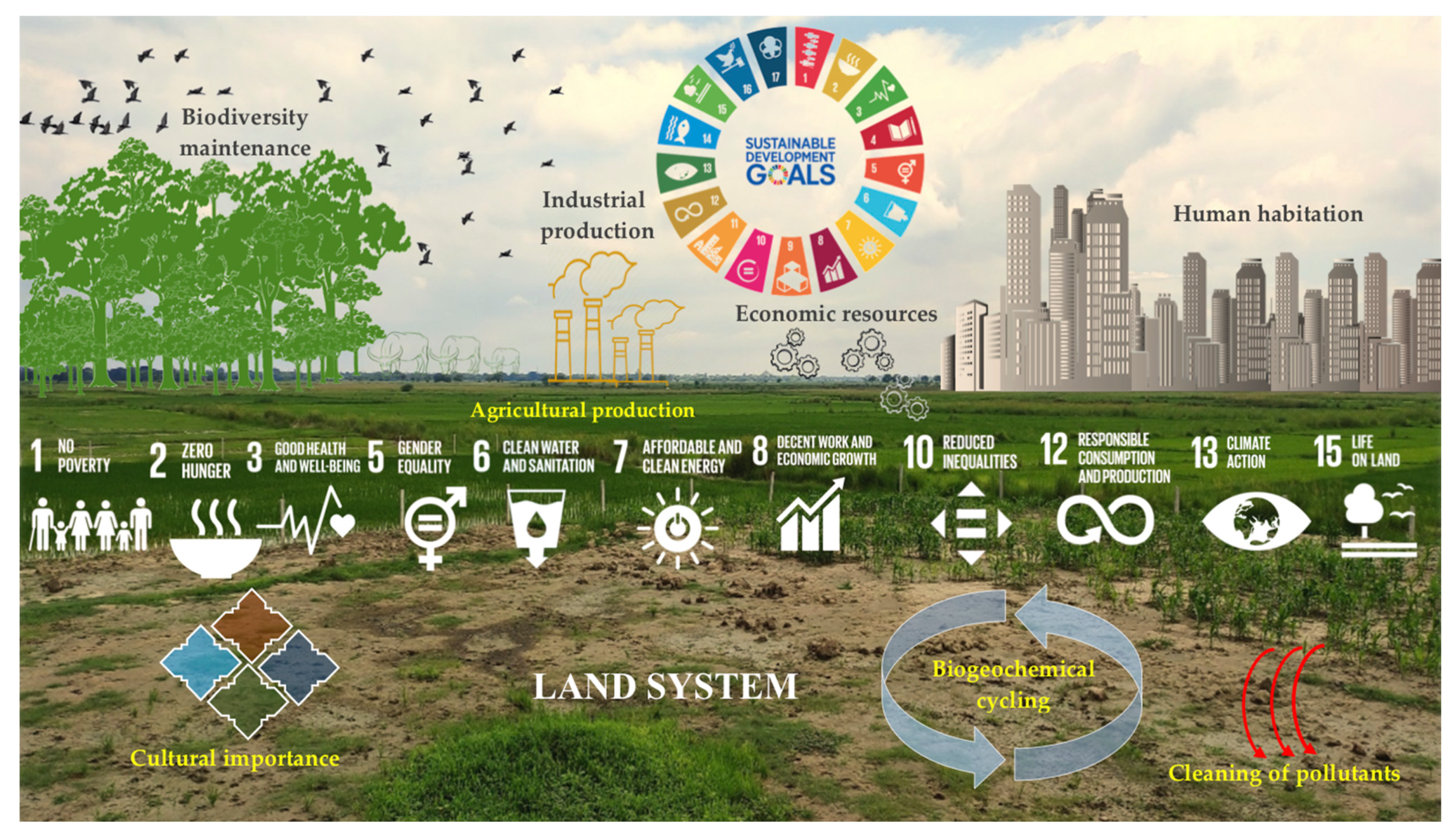
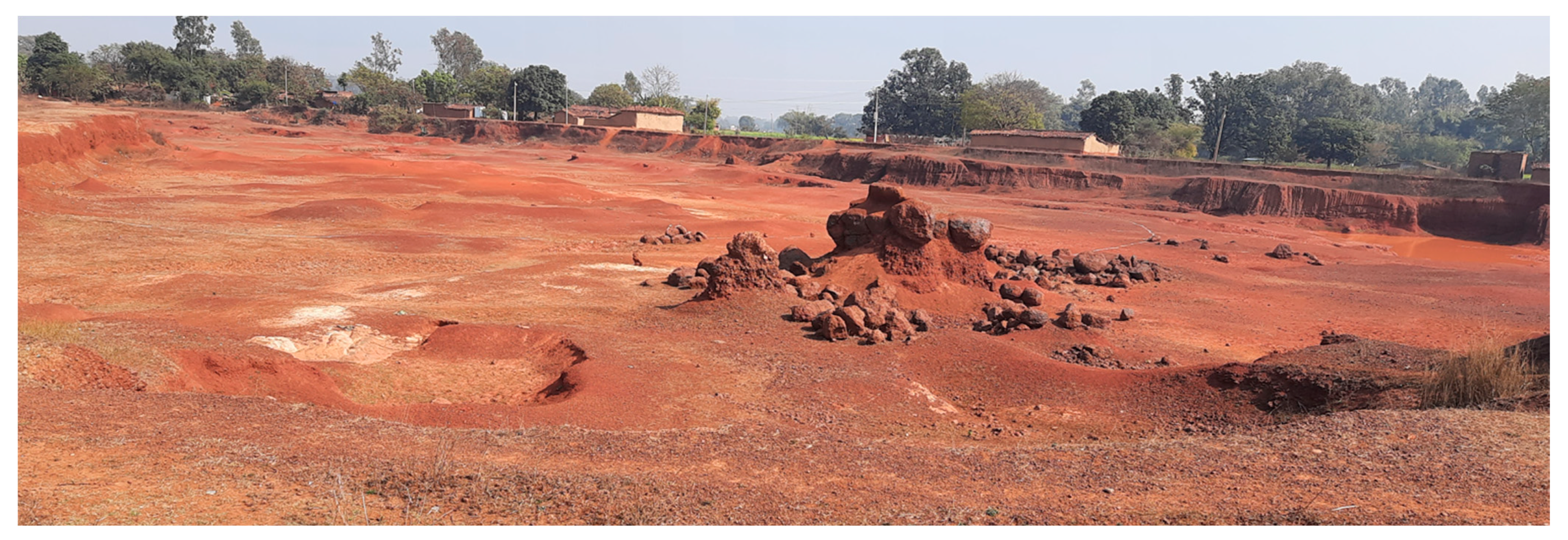
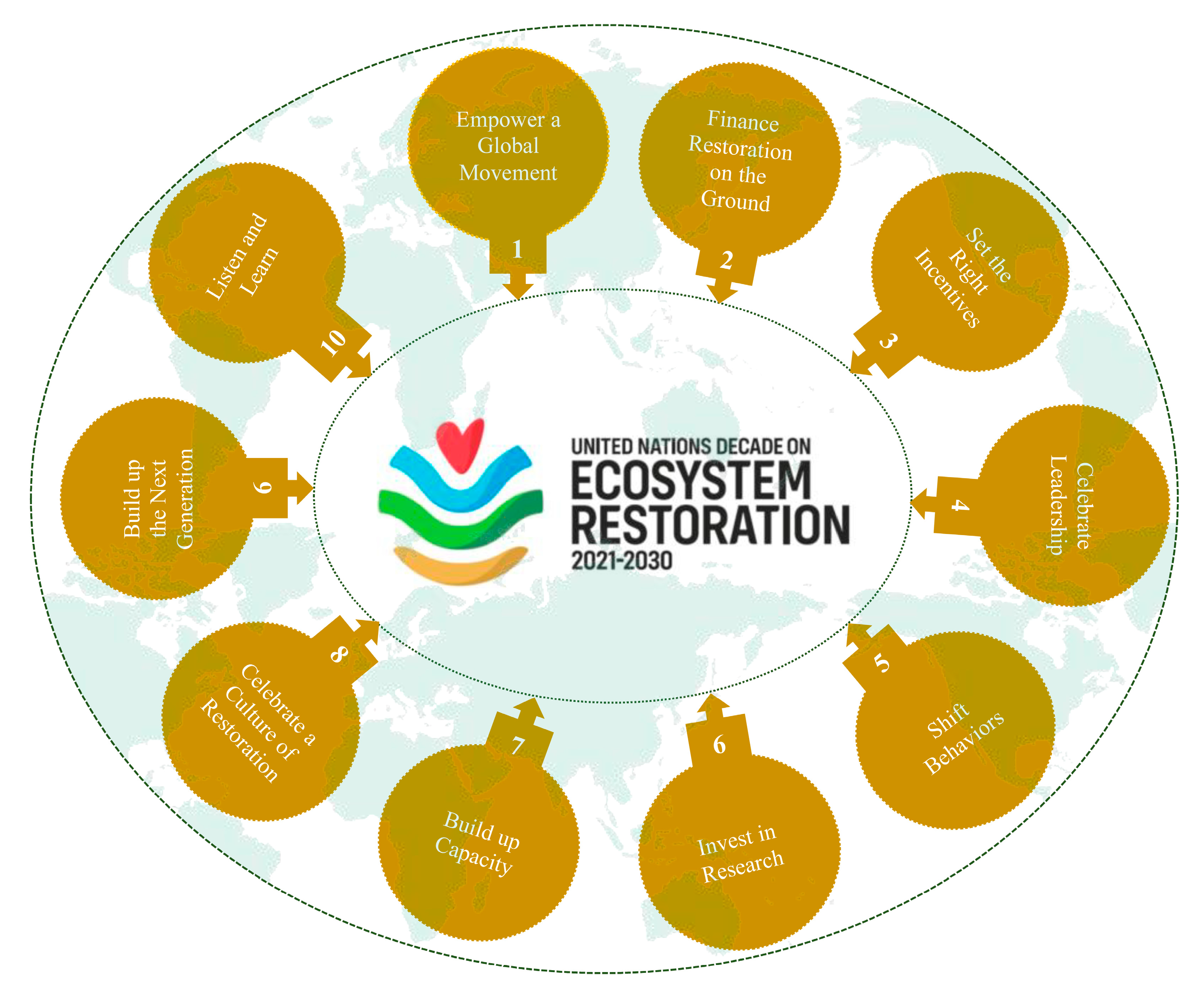
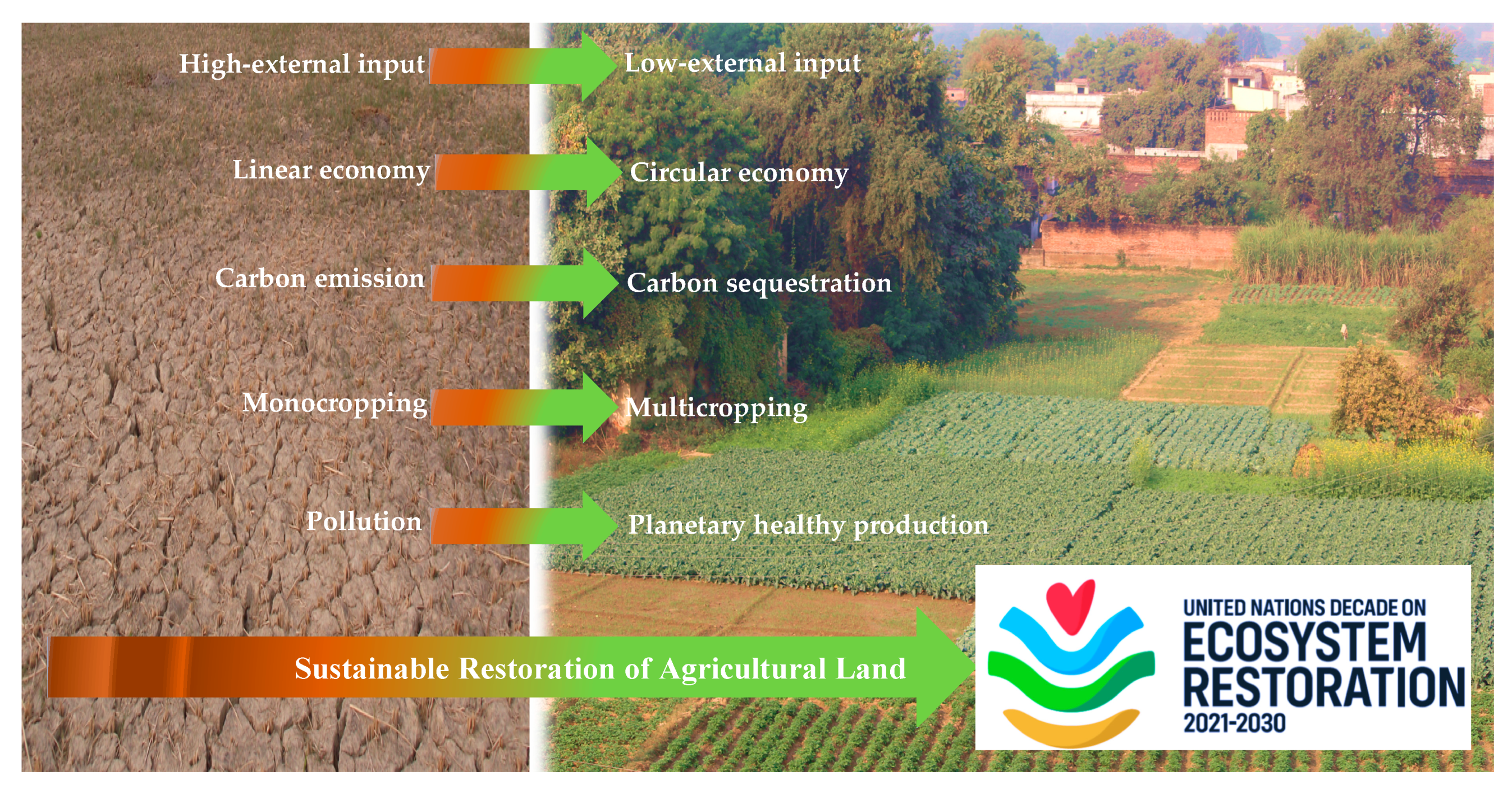
| Related SDGs | Concerned SDG Targets | Possible Co-Benefits from Land Restoration | |
|---|---|---|---|
| Restoration (Ongoing) | Restored (2030) | ||
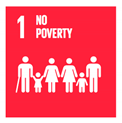 |
| x | |
| x | ||
| x | x | |
| x | ||
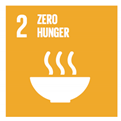 |
| x | |
| x | ||
| x | x | |
| x | x | |
| x | x | |
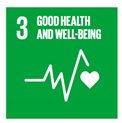 |
| x | |
| x | ||
| x | ||
| x | x | |
| x | ||
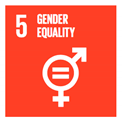 |
| x | x |
| x | x | |
| x | ||
| x | ||
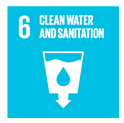 |
| x | |
| x | ||
| x | ||
| x | ||
| x | ||
| x | ||
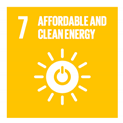 |
| x | |
| x | x | |
| x | x | |
| x | ||
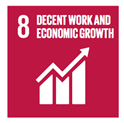 |
| x | x |
| x | x | |
| x | x | |
| x | ||
| x | x | |
| x | ||
| x | x | |
| x | ||
| x | ||
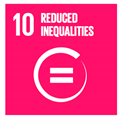 |
| x | x |
| x | ||
| x | ||
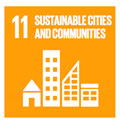 |
| x | x |
| x | ||
| x | ||
| x | ||
| x | ||
| x | ||
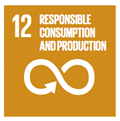 |
| x | x |
| x | ||
| x | ||
| x | ||
| x | x | |
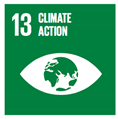 |
| x | x |
| x | ||
| x | ||
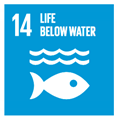 |
| x | x |
| x | x | |
Publisher’s Note: MDPI stays neutral with regard to jurisdictional claims in published maps and institutional affiliations. |
© 2021 by the author. Licensee MDPI, Basel, Switzerland. This article is an open access article distributed under the terms and conditions of the Creative Commons Attribution (CC BY) license (http://creativecommons.org/licenses/by/4.0/).
Share and Cite
Abhilash, P.C. Restoring the Unrestored: Strategies for Restoring Global Land during the UN Decade on Ecosystem Restoration (UN-DER). Land 2021, 10, 201. https://doi.org/10.3390/land10020201
Abhilash PC. Restoring the Unrestored: Strategies for Restoring Global Land during the UN Decade on Ecosystem Restoration (UN-DER). Land. 2021; 10(2):201. https://doi.org/10.3390/land10020201
Chicago/Turabian StyleAbhilash, Purushothaman Chirakkuzhyil. 2021. "Restoring the Unrestored: Strategies for Restoring Global Land during the UN Decade on Ecosystem Restoration (UN-DER)" Land 10, no. 2: 201. https://doi.org/10.3390/land10020201
APA StyleAbhilash, P. C. (2021). Restoring the Unrestored: Strategies for Restoring Global Land during the UN Decade on Ecosystem Restoration (UN-DER). Land, 10(2), 201. https://doi.org/10.3390/land10020201






